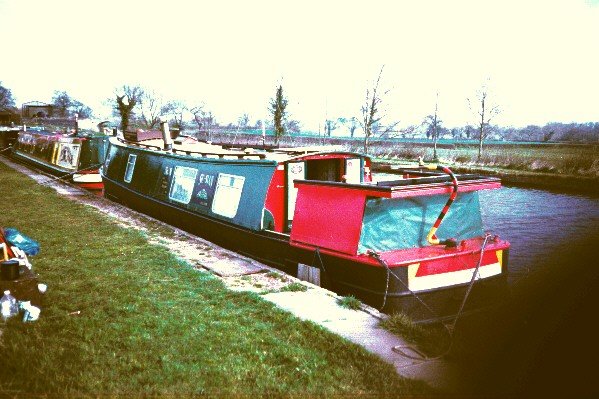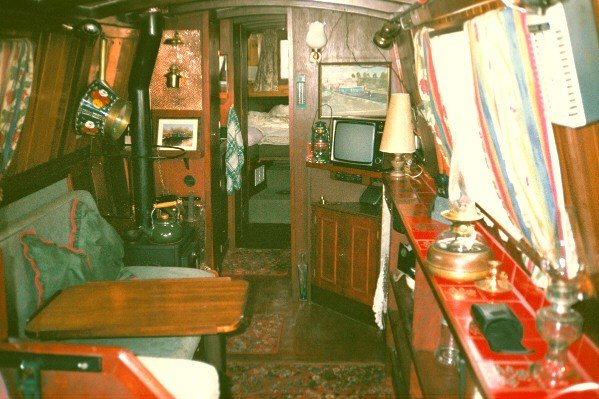

alvicchas1
-
Posts
145 -
Joined
-
Last visited
Content Type
Profiles
Forums
Events
Gallery
Blogs
Store
Posts posted by alvicchas1
-
-
11 minutes ago, Mike the Boilerman said:
I'm not sure why you are humbly apologising. You've done nothing to apologise for.
Really agree - perhaps there is a risk of being too nice. I think Ebay have access to dispute correspondence and there should be no suggestion that you have done anything wrong. The heater was advertised as Planar - not a Planar type heater - so it was mis-selling and the fact that they have now removed Planar from the listing backs that up. Hang on in there.
-
Hi,
0.58kg can definitely not be the weight of the heater. 5.8 kg is more realistic.
Could be a typo error or I remember you mentioning availability with and without LCD Monitor. You opted for with LCD Monitor.
Could they have dispatched the heater and monitor separately and you have the paperwork for the monitor.
Interesting that the basic heater is being listed on Ebay with delivery direct from the UK for £165.90 and Germany for £169.32 + £30.00 delivery.
-
Would agree with Dave_P on this. Cruising the Llangollen canal is a great experience. I moored between Ellesmere and Froncysyllte for four years and later when continually cruising used to return to it for the winter. Not only is the scenery wonderful but it is an opportunity to see some wonderful canal engineering - particularly the aqueducts. Ellesmere is a lovely old Saxon town close to the meres and with olde worlde shops and pubs (great old fashioned butchers if you like your meat). Llangollen is also very interesting - possible to walk to where the River Vyrnwy feeds the canal to carry water to resevoirs at Hurleston.
The canal can get very busy in July/August but should be OK in September.
-
Hi Col,
Really sorry to here about your recent problems and hope that things are better soon. In the grand order of things the heater issue is minor. Please take this in the spirit is intended but I hate to see you "beating yourself with a big stick" over the heater. You have done all you can about the heater - would it be better to put it on "back burner" (excuse the pun) and wait to see what happens when it arrives.
Vic
-
 1
1
-
-
Whatever happens I hope it works out well for you.
-
4 minutes ago, mrsmelly said:
So they can see if you are " Bone fide " cruising which people with a permanent mooring don't have to adhere to. Awaiting incoming.
But don't people with moorings have to follow the "14 day rule" when cruising?
-
Interesting - I thought the licence fee is the same if you are a continuous cruiser or have a mooring. What difference does it make to CRT.
-
3 minutes ago, reg said:
The 2nd ybw thread above does mention that the Russian company also does a 5kw version but the UK don't stock it
Not totally sure but I think that the Planar 5Kw version is a water heater rather than blown air heater
-
Interesting to note that Planar heaters UK list 2kw, 4kw and 8kw versions and the one from Hong Kong is 5kw.
-
I had a Webasto air heater in a campervan. There were two controllers - one a thermostat for temperature and one a programmable time clock.
Every time the heater flashes up the glow plug heats up to start the combustion process and this can draw perhaps 20 amps from the battery.
It is important that the thermostat is sited in a place without drafts so that the heater does not keep cycling on and off and running the battery down too much - it was sometimes a problem in the campervan but should not be too much of a problem with greater battery capacity on a boat.
If a 5kw heater is used to heat too small a space there could also be a problem with the heater cycling on and off too much.
-
Amazing price but I think I would be concerned abouty safety approval accreditation and spare parts.
-
3 hours ago, ianali said:
Some boats burn some very Smokey fuel.
Ian.
Yep! Isn't this the nub of the problem! Quoting from the article " Alistair Wilson, the city council’s streets and open space development manager, said that boat owners were licensed and had an obligation to burn smokeless fuel. "
Some boaters are happy to burn anything that is wood based when the material is not really suitable and with stoves not designed to burn it in an environmentally friendly way.
-
On 12/17/2017 at 16:04, luggsy said:
Hi, If you go for the auto fill bottle option you could save a bit on this one: https://uk.rs-online.com/web/p/water-fillers/1968222/
-
In the early 2000's we lived on our boat and were continual cruisers for a few years. We didn't aspire to a washing machine but bought a small spin dryer which was useful to get as much moisture out of washing as possible - especially in the winter when drying washing is more difficult. As it only ran for a few minutes it didn't use much electricity via the inverter. If you decide against a washing machine I'd strongly recommend a spin dryer.
-
1 hour ago, cheshire~rose said:
There used to be one on Python and it was dreadful. it hold such a small amount of fuel and it has so many gaps around the door that it is impossible to regulate how fast it burns properly. Once going it was quite easy to get the entire casting glowing red from the heat but within an hour all the fuel was burned and things started cooling down again. They are great for a focal point in the garden on a spring or autumn evening but as a heat source for a boat I would say it is completely impractical and a waste of money and resources to fit one.
Cheap is not always cost effective
Totally agree. A pot belly stove was fitted to my first boat and I only ever used it once before replacing with a Morso. It looked great but it was virtually impossible to control the air flow and hence heat output.
-
14 hours ago, Tony Brooks said:
I am not convinced that this provides a definitive test. The boat should still have it 240V hull bond so even if the GI diodes were totally open circuit there MIGHT be enough conductivity through the water to fool the tester (happy to be told I am wrong here). Possibly even more so because modern GIs probably produce about 2 V of voltdrop across themselves.
The mains socket tester may not definitively test that the earth path is through the GI but the important thing is that there is an earth path. When a boat is using an inverter (no shore hook up) isn't the earth path through the hull bond and water anyway. RCD's are pretty sensitive and operate with a fault current of a few milliamps.
There are many references on the internet for testing a galvanic isolator using the diode setting on a multimeter.
-
Galvanic isolators do involve connections to the shore and boat earth. I keep a 240 volt mains socket tester on the boat and check the boat mains sockets regularly to check that the earth connection is working.
The socket testers (as cheap as £5.99 on Amazon) just plug into a mains socket and show if the socket is wired correctly, and the earth working, with a combination of LED's on the tester. Also a handy thing to have to check sockets at home.
-
 1
1
-
-
1 hour ago, Steilsteven said:
My son has one of these which was built in the early seventies, I think that they are quite a pretty design with a certain amount of sheer.
The superstructure on his comprises of ply bulkheads, grp top and aluminium sides.
Keith
Su Sian had a cabin with solid mahogany frames, plywood sides and two layers of plywood for the roof. The cabin had a very attractive curving sweep to the sides and roof and almost looked oriental. The roof had a layer of bonded canvas which was in very poor condition because of many layers of badly applied paint. In 1997 I stripped off the canvas and the plywood underneath was in good condition with attractive grain. After consulting a company in Southampton that specializes in the fibreglass coating of wooden yacht hulls I sanded the roof, applied a coat of epoxy primer, a layer of fibreglass matting and two more coats of resin. After a final sanding and a coat of anti UV varnish, if I say it myself, the roof looked wonderful and during a three year trip cruising the canals received many admiring comments.

Oops - one picture too many - I think that must have been a congratulation for a good job on the roof
-
1 hour ago, Steilsteven said:
My son has one of these which was built in the early seventies, I think that they are quite a pretty design with a certain amount of sheer.
The superstructure on his comprises of ply bulkheads, grp top and aluminium sides.
Keith
Su Sian had a cabin with solid mahogany frames, plywood sides and two layers of plywood for the roof. The cabin had a very attractive curving sweep to the sides and roof and almost looked oriental. The roof had a layer of bonded canvas which was in very poor condition because of many layers of badly applied paint. In 1997 I stripped off the canvas and the plywood underneath was in good condition with attractive grain. After consulting a company in Southampton that specializes in the fibreglass coating of wooden yacht hulls I sanded the roof, applied a coat of epoxy primer, a layer of fibreglass matting and two more coats of resin. After a final sanding and a coat of anti UV varnish, if I say it myself, the roof looked wonderful and during a three year trip cruising the canals received many admiring comments.

-
-
Hi,
Depends where you calorifier is, but I have a hose attached permanently to the lowest drain off point which runs to the stern bilge ( the one under the stern gland). When I need to drain the calorifier the water runs into the stern bilge and I pump it out with the bilge pump.
-
1 minute ago, Neil2 said:
After 30 years how on earth could he identify such a slight difference?
I assume that the plating above the waterline had negligible wear and his electronic thickness tester could detect the difference
-
Hi All,
I have a 1986 narrow boat, with a R & D Fabrications Hull, that I have had for 7 years. This month I had it out of the water for an insurance hull survey and blacking. Interestingly the surveyor commented that some of the side hull plates were originally 1/4 inch and some 6mm but thought that the hull was in generally very good condition with evidence of very good welding. He did not think that re-plating would be required for many years. The insurance company will not require another hull survey for 10 years.
I know things change but I hope R & D pass their high standards/quality down into the future.
-
Oops - typo - Moorings in Tring!!!!





Diesel heating 5kw new for £163
in Boat Equipment
Posted
All sounds great BUT have you had the money from China and has the case with Ebay been closed! Would it be wise to dispose of the heater until these things have happened?